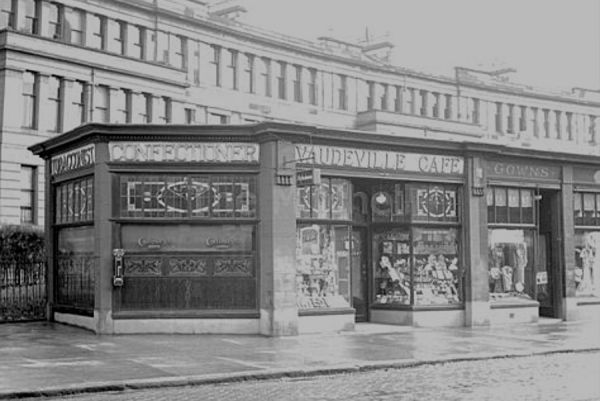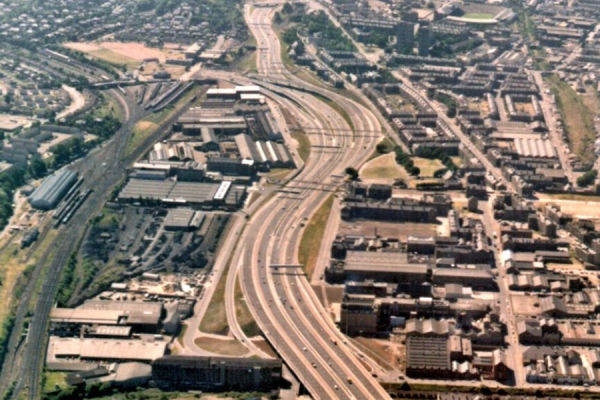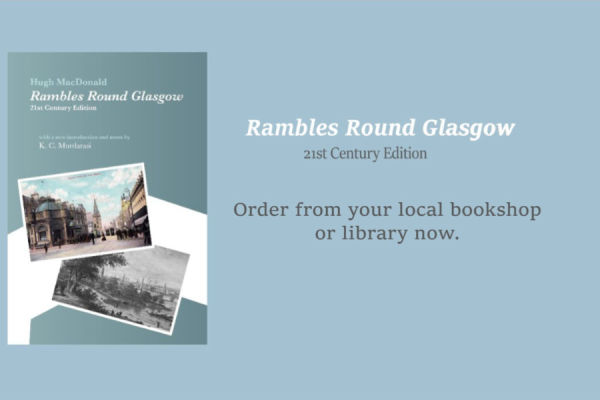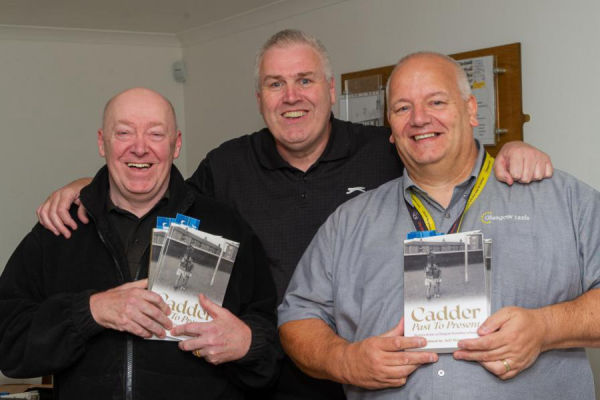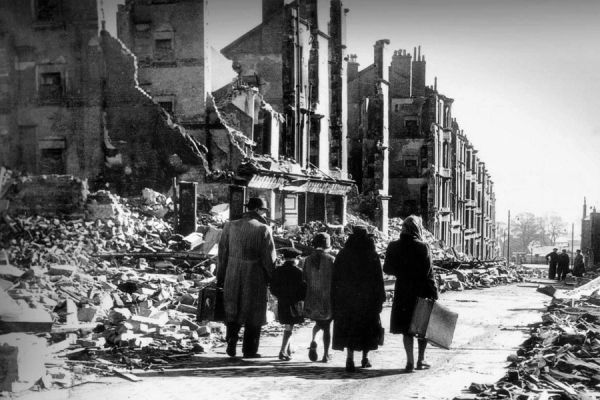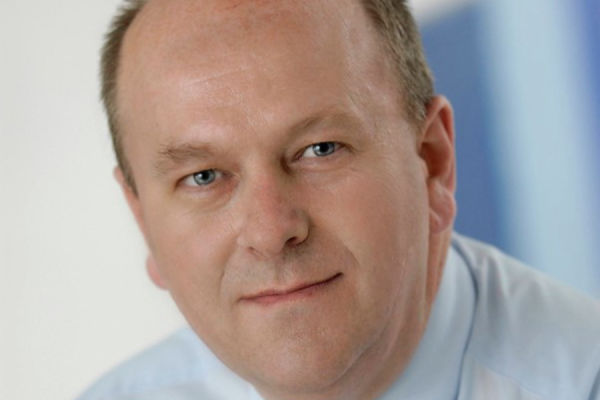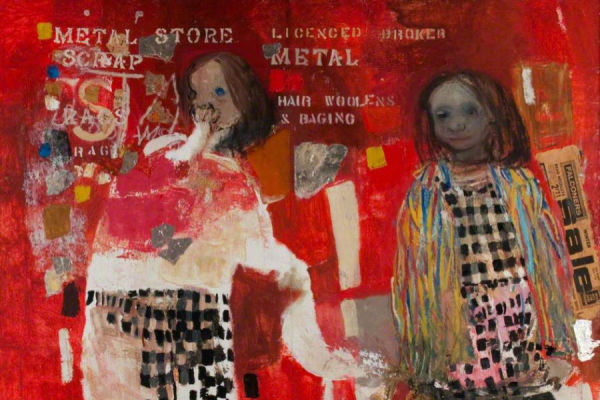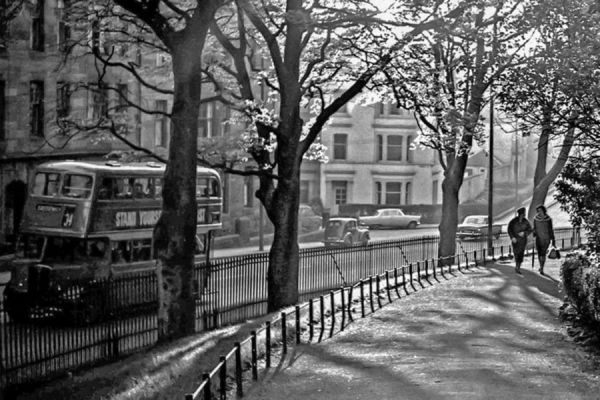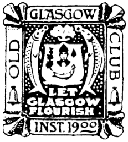Welcome: President Trezise gave members and visitors alike a warm welcome, thanking
them for coming along to the first meeting of the 2023/2024 session.
Mobile phone etiquette and safety / emergency procedures were explained.
‘Weather Check’ - Artie reminded everyone to check the club website before heading out
to a meeting if we were experiencing adverse weather conditions.
September Meeting Attendance: There were 72 people in attendance made up of 57
members, the speaker Rafaello Gonella and 14 visitors, some of which were from the
2023 Doors Open event.
Apologies: There were apologies for absence from Peter Mortimer, Ruaraidh Clark.
Minutes: President Trezise asked if everyone has seen a copy of the minutes, either
digitally or in print form and mentioned that there was a misspelling of a name which
would be rectified.
There being no further amendments or matters arising, they were proposed by Robin Muir
and seconded by Glen Collie.
President’s Report: President Trezise reflected on our last talk of the 2022/2023 session,
a fabulous talk on ‘The Barras’ given by former club President and long time supporter of
the club, Peter Mortimer.
Peter also facilitated the club’s annual outing on 3rd June by giving us a pre-opening tour
of the newly renovated Provan Hall, an A listed medieval building in the heart of
Easterhouse dating back to the 1460s. It is run by Provan Hall Community Management
Trust, which the club donated £100 to in thanks.
Artie also thanked Glasgow Vintage Vehicle Trust and driver for the most enjoyable trip on
a sunny day around the East End of Glasgow aboard a vintage bus. Destinations Provan
Hall and Hogganfield Loch where the picnics were eaten. The £10 charge per person was
given directly to Glasgow Vintage Vehicle Trust.
He also reflected on the club’s traditional Tappit Hen Bowling Tournament, which took
place at Kelvingrove Bowling Greens on Thursday 18th May. For those that don’t know, it
is a fun tournament that players and non players alike take part in. The prize for the
winning player is a large trophy which is considered lovely by some and a carbuncle by
others. This years lucky winner was Graham Pascall, who has the honour of keeping it for
a whole year.
Artie mentioned two club events/walks that were upcoming and if they were of interest to
let Margaret at the signing in desk know as spaces were limited.
Thursday 5th October - a behind the scene artworks tour at Glasgow Museums Resource
Centre.
Saturday 14th October - Tobacco Lords Merchant City Walk with Kevin Scott.
Members and guests were reminded that Colin, membership secretary, was here tonight
to take the subscriptions, which are £30, and give out the membership cards, along with
the three business cards that let you bring three different guests to any of the ordinary
meetings this session. Although we have a healthy club membership, Artie hoped that
tonight’s visitors would enjoy the talk so much that they might consider joining.
Artie invited club member Steven Mcfarlane, who gave the talk to the club on Sulman’s
Map at the November 2022 meeting to give us information on a Youtube video regarding
a Glasgow map predating Sulman’s map.
Steve informed us that earlier this year, David Pritchard gave a zoom talk for Glasgow City
Heritage Trust on a similar birds eye view of Glasgow that predated Thomas Sulman’s
map by eleven years.
Steve thoroughly recommended watching the Youtube video that they had published
called ‘Many a Chill and Lonely Vigil’ - George McCulloch’s View of Glasgow in 1853 and
has left some leaflets with the information on how to view printed on them.
Artie thanked Steve for the information and invited former club President, Brian D.
Henderson to give a tribute to club member, Maureen Smith.
“Old Glasgow Tribute to the late Maureen Smith, late director and Honorary Treasurer.
President Artie, fellow members and friends, ladies and gentlemen, It is with great
sadness that I must intimate the death of Miss Maureen Smith.
A member since 1975, with service as a director, and treasurer in her time, Maureen
experienced poor health in her later years. I was deeply sorry to receive the news from her
sister, Sheila, with whom she had shared their home until residential care became
necessary.
What can I say about Maureen? A positive character. Together with old friend, and fellow
member, Mary Rodger (who had joined during that same February meeting). A music-hall
comedy double act comes to mind!
The scene: a Summer outing about 20 years ago, or so, down in the Borders, I think. At
the table, club worthy Bob Dunlop with Nancy, my friend James from Edinburgh, and yes,
you have guessed, Maureen and Mary! Two daft sticks! How they kept us in stitches with
jokes and stories, the delivery - excellent! Mirth, never ending.
Fast forward a few years, The Mitchell and another Club stalwart, Liz, almost ejected from
the Glasgow Room, our chat and laughter disturbing the peace! But what a family history
trip! Maureen would revel too in the discovery, wonderful as it was for her, that she was
related to one Mr Rossborough, of the Old Panopticon, Trongate. How totally chuffed she
was.
Yes, quite a character was Maureen. And yet another very sad loss for the Club. But I, for
one, will smile as I remember her. She will never be forgotten.
Ladies and gentlemen, thank you”.
Artie thanked Brian and introduced the first speaker for the new ‘My Glasgow’ part of the
meeting.
My Glasgow: Artie introduced our first speaker in the ‘My Glasgow’ segment, Julie Clark,
a University lecturer in Sociology and Social Policy, with a special interest in the urban
environment and social inclusion.
Julie informed us that it was decidedly not an educational talk about fountains, more
about evocative places and what they mean to you. From an early age Julie’s were
fountains.
The talk starts off with a very young Julie pictured beside a typical Glasgow water pipe.
Slightly older and the first fountain that wowed her was The Cameron Memorial Fountain,
which stands at the junction of Woodside Crescent and Sauchiehall Street. As a child it
appealed because of the jaunty angle it stands at but as she got older she found out it
was built by public subscription for Sir Charles Cameron, local MP of some 21 years,
newspaper editor and a prominent member of the Temperance Movement campaigns.
As Julie’s life moved on we saw photographs of her at fountains all over the city that
meant something to her, The Stewart Memorial Fountain in Kelvingrove Park, the wow of
fountains, The Doulton Fountain at Glasgow Green, Bailie James Martin Memorial
Drinking Fountain in Arcadia Street on the edge of Glasgow Green, The Saracen Fountain
in Alexander Park which is badly needing attention and The Aitken Memorial Fountain at
Govan Cross.
As a small child, Julie’s interest in fountains was based on their appearance and stunning
design but as she got older she was intrigued by the story each fountain could tell and
the symbolism they portrayed. They were dedicated to the city’s reformers, former Lord
Provosts of Glasgow, Industrial innovators and the ordinary people who had an impact on
peoples’ day to day lives. Each fountain has a story to tell.
“There is something thrilling about fountains as a little person, then you realise what they
mean. Beautiful, wonderful and fascinating”
Artie thanked Julie for her superb and knowledgeable talk on Glasgow fountains.
Tonight’s Talk: ‘Tallys’ Cafes and Chippies’ with Raffaello Gonella
Artie introduced tonight’s speaker, Raffaello Gonella, who is happy to be called Ralph. He
studied genealogy at Strathclyde University and was recently awarded the Italian Gold
Medal for his contribution to the Scottish Italian community.
Ralph introduced himself by saying that although it is his talk and his story, it is a story
that most Italians in Scotland have. He was born, raised and educated in Glasgow but
has no Scottish blood.
In 1910 Ralph’s family came to Scotland from Italy, a relatively new country that was
going through a poor economic time, resulting in lots of people leaving the country. Lots
of people were going to the USA, Canada, Argentina and Australia but a lot of Italians
settled in Britain too.
This is where his grandfather, Quinto Santini, chose to come to because a lot of his fellow
Tuscans had settled in and around Glasgow and Edinburgh. He came with his wife and
two young children, with a further five being born in Scotland. Very soon he opened a
cafe with his brother, then another brother joined them from Italy and they opened a fish
and chip shop.
There was what must have seemed like a little Italy happening in the small mining town of
West Calder, with the four Santini brothers having 15 children between them. Eventually
two of the families moved through to Glasgow and two moved back to Italy.
This is also about The Italian Cloister Garden and Arandora Star Memorial situated beside
St Andrew’s Metropolitan Cathedral, 196 Clyde Street, Glasgow G1 4JY. Ralph invited us
to join him for a guided tour on Saturday 16th or Sunday 17th September (10am-3pm) as
part of Glasgow’s Doors Open Festival. There is no need to book and the tour will last
approximately 30 minutes.
The remembrance garden is next to the cathedral. It is not full of flowers as you think of a
garden, it is a remembrance garden dedicated to Italians when Italy declared war in 1940,
when Mussolini sided with Hitler.
The night that changed history for Italian Scots was 10th June 1940, when Italy declared
war on Britain and France and entered the war on the side of Adolf Hitler and Nazi
Germany. The British prime minister, Winston Churchill, and the British war cabinet
immediately ordered the arrest of all Italian males aged between 16-70 to be interred as
enemy aliens. Winston Churchill infamously said “collar the lot”.
There followed a period of uncertainty, terror and fear, with thousands of Italian men,
some having been born in the U.K, being arrested from their homes and places of work in
a haphazard manner and held in a variety of makeshift temporary prisons unfit for
purpose.
There are stories that have emerged from this time, some nice, some not so nice. Italian
cafes and chip shops were looted and vandalised by angry mobs, the very same people
who had been in a few days earlier to buy their chips but some were also protected from
vandalism by fellow Scots.
Ralph’s Nono, his maternal Grandfather, Quinto Santini, aged 59, was arrested and held
at Maryhill Barracks overnight. He was then taken to Woodhouse near Edinburgh, a
makeshift tented camp which was patrolled by armed guards. A week later he was
transported to Warth Mills near Bury in Lancaster, an unfit for habitation, damp, derelict
former cotton mill that was rat infested.
The U.K. Government had decided to send all those classed as enemy aliens to Canada
and Australia. On the 1st July, they were moved from Warth Mills by train to the port of
Liverpool, straight to the docks and the first 734 men were put onboard the Arandora
Star.
The Arandora Star was a cruise liner owned by the Blue Star Line, which had started out
as a cargo ship. Think 20 years more modern and luxurious than the Titanic, which only
took first class passengers. It was the pinnacle of luxury when it had been fitted out at
Fairfield Shipbuilding, Glasgow in 1929.
This, however, was not the same ship that was tasked with deporting the interned men
and prisoners of war to Canada, this ship had been stripped of every last element of
luxury, with only the mirrors remaining. These men did not not know where they were
being taken to.
The ship wasn’t displaying the International Red Cross symbol to signify that there were
civilians on board and was sailing without an escort, with access to lifeboats being
obstructed by heavy wire mesh.
The unaccompanied Arandora Star sailed up the Irish Sea to the the top of Ireland, where
it was spotted by a German U Boat around 6.45am. It was torpedoed by the German
U-47, captained by Captain Gunther Prien and tragically sunk with the loss of 805 men
about 75 miles off the coast of Ireland.
The dead were Captain Edgar Moulton, 12 officers and 42 crew (55 of the 174 crew
onboard), 37 of the 200 military guard, 243 of the 479 German, Austrian and Jewish
Internees and 470 of the Italian Internees, with Ralph’s Grandfather, Quinto, being one of
them.
The bodies of the men were washed up along some 600 miles of coast from the Western
Isles of Scotland to the shores of Ireland for months after the event. The men were
recovered from the sea by locals and buried in cemeteries up and down the West Coast,
some in marked graves and some in unmarked graves.
The Canadian destroyer HMCS St Laurent arrived and rescued the 868 survivors, of
whom 586 were detainees. They were taken to Greenock where the uninjured were
promptly returned to Liverpool and placed on the SS Dunera for transportation to camps
in Australia, where they would remain for the rest of the war.
Ralph’s father, Renato Gonnella, was arrested aged 22 and initially held in Paisley jail
before he too was transported in the same route as Quinto to Liverpool docks. He was
transported aboard the SS Ettrick to Canada on the 3rd July, although this ship had an
escort.
There were 407 Italians onboard the Ettrick. They were treated badly, herded into the
lower hold of the ship and kept mainly below deck for the voyage in overcrowded and
inhumane conditions, receiving only meagre rations and water.
It was a horrendous 10 day voyage to the city of Quebec where they were met by armed
and hostile guards. They were issued with numbered uniforms and taken by train to
Montreal before being bused to the île Sainte-Hélène on the St Lawrence River. The
conditions in the camp were harsh, with the men being forced to carry out hard labour.
This is where Renato would spend most of the next 4 years before being allowed back to
Scotland.
For some 83 years most families of the victims have had no bodies or papers as the men
were classed as enemy aliens. Ralph went on to say that there were lots of tragedies of
war, that being the nature of war but the Italian one was a forgotten tragedy that the
Scottish Italian community wanted to commemorate.
When St Andrew’s Metropolitan Cathedral was being renovated from 2009-2011, the
Italian community asked Archbishop Mario Conti for a piece of land where they could
build a garden of remembrance and memorial. This request was granted and land
adjacent to the Cathedral was made available.
The Scots-Italian community generously donated money and architects were asked to
submit their designs for this garden and memorial that would remember the loss, recall
events and help heal memories.
Roman architect, Giulia Chiarini’s very modern design was chosen on the day she
presented it. It was a very emotional presentation where she showed the monumental
mirrored plinths with inscriptions from the Gospel and the Italian poets, which she
paraphrased as exaggerated gravestones. This would be the focal point, a monument
commemorating the Arandora Star tragedy.
The only luxury that had been left in place on the Arandora Star were the mirrors, the
gorgeous luxurious mirrors that Giulia thought would have made such a noise, the
smashing of glass would have been one of the last sounds that they would have heard on
the ship.The planned long water feature was to represent the torpedo going through the
water.
When completed the garden has at its focal point the monument commemorating the
Arandora Star tragedy and a century old olive tree called Olivia that was gifted by the
people of Tuscany as a sign of peace and reconciliation. Around the walls, marble
plaques tell the story of the Cathedral, the Catholic revival in Scotland and the Arandora
Star tragedy. The names of the every one of the Scots-Italians who perished on the ship
have been carved on the central plinth.
The St Andrew’s Cathedral Italian Cloister Garden which took 18 months of work was
officially opened on 16th May 2011 with a grand concert in the cathedral given by
musicians flown in from Milan.
Present at the opening were Archbishop Mario Conti, First Minister Alex Salmond, the
Lady Provost of Glasgow and Mr Rando Bertoia, the 91 year old who was the only living
survivor of the tragedy. Also present were the architect Giulia Chiarini, the representatives
from the towns that most Scots Italians come from, Barga and Pistoia in Tuscany and
Filignano in Lazio.
There are plaques and memorials to the Arandora Star tragedy all around the country and
in Barga, Tuscany but the Cloister Garden is the largest permanent monument to the
disaster anywhere in the world.
After the war all these detained Italians were released. They were coming home to
businesses that had folded and properties that weren’t there anymore. The Italian women
had been put under enormous pressure trying to keep businesses running as best they
could with food rationing in force. There was no cafe for Ralph’s Dad to come back to so
he got a job in Saltcoats with a distant cousin.
The late 40s, 50s and 60s were the boom years for the Italian Cafes and Chip Shops.
Everyone, regardless of religion, got or shared a fish supper, with Fair Friday being the
busiest night of the year.
They were so busy, they were a place you could safely go to that wasn’t a pub and
Italians don’t take it as detrimental that they were called Tallys since it was used as a term
of endearment. Ralph recalls that he never got discrimination from other people in the
area, just his teachers. Every teacher would ask at his first registration whether his family
were cafe or chip shop, something that has stuck with him over the years.
Ralph finished his talk by fast forwarding to the 1970s when Italians went to University etc
and started moving away from the family owned chippies and cafes. The families have
moved on and into the 2000s and are totally integrated into all parts of Scottish life.
Artie thanked Ralph for his impassioned and informative talk and invited the audience to
ask any relevant questions or comments.
Crawford recalled that his mother told the story about his father who was a special
constable in 1940 who had been put on duty that particular night at the Lyceum Cafe to
protect it from looting. His Mum got a lovely box of chocolates from the owners.
Q Ralph was asked how many generations his family went back in Scotland.
A Ralph said that his family were phase one of immigration to Scotland, which was pre
WW1.
Q Was there any recognition or apology from the UK government given at any time?
A Ralph said that he did not want an apology from people who were third generation
removed and were not responsible for what happened. You also have to put yourself
In that place and what was happening at the time. He said that his Dad didn’t speak
English, so he would have been suspicious too.
Ralph mentions that he and Michael Donnelly were working on a publication with a
photograph and biography of all 94 Scots Italians who had died. When Michael started
investigating one of the names on the list, Francesco D’Inverno, he found out that he had
a death certificate because he had been washed up on Irvine beach.
When Michael called up the death record it revealed that he wasn’t Scottish at all and his
last known address was London. It also showed that he had been found drowned at
Lendalfoot.
Further investigation found details of a burial in common ground, potentially with other
people. This is where Ritchie and Lorna Conaghan of the Girvan and District Great War
Project came in. They were able to pinpoint the location of the grave and establish that
Francesco had been buried on his own, meaning he could get a gravestone.
Mary Smith in Ayr knew the boy who had been 9, now 94, who had found Francesco’s
body. He was an evacuee from Rutherglen who had been on the beach with his fishing
rod looking for ‘luckies’ when he found the body.
For 83 years the boy hadn’t known what had happened to the body and was so relieved
to know that they able to give him a name, some background information and tell him
where he was buried.
They also managed to get in touch with Francesco’s family and spoke to them last night.
The family had never known what had happened to the body and thought Francesco had
been buried at sea or elsewhere.
The story will be broadcast on BBC radio at the weekend.
Vote of Thanks: Tonight’s vote of thanks was given by club director, Robin Muir, who
thanked Ralph for his unbelievable story which was about family, recovery, finding the
positive and forgiving when it could have been so different.
Quiz: Tonight’s question was ‘The Lobbey Dosser statue on Woodlands Road is
dedicated to…..? a) El Fidelo b) Bud Neil c) Rank Bajin d) Neil Budd’. The answer was
Neil Budd and the correct entry was pulled out of the hat by Ken Benjamin was Anna
Forrest.
AOCB: None
Close: Artie thanked everyone for attending the talk tonight and hoped that some would
be able to make it back for the 12th October meeting, ‘Glasgow’s Motorway System’,
with speakers Stuart Baird and John Hassall.
Shona Crozer
Recording Secretary
TOP OF PAGE
